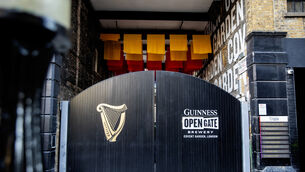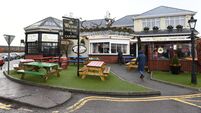Silver lining in Asia for shellfish firm

Adversity turned to opportunity for Dungarvan shellfish company Harty Oysters when the loss of its only market in France in 2014 led to the opening up of a much more significant one in China.
The collapse of the French market, due to an oyster glut, would have been catastrophic for the west Waterford company, but for the fact that it had just built a new packaging and purification plant.
This allowed it to pivot its business to Asia and within the space of just two years, get turnover back up to pre-2014 levels.
“Our biggest problem, now, is that we can’t supply the demand in China from our existing plant. In the spring we will start work on a second plant, which when up and running in August, will double capacity to 20 tonnes a week,’’ said company managing director Raymond Harty.
Aiming to supply the growing demand for oysters from the burgeoning middle class in China, the company aims to increase its oyster production from 500 tonnes a year to between 800 and 1,000 tonnes by 2020.
Now a finalist in two categories of this year’s Bord Iascaigh Mhara National Awards, Harty’s has been growing oysters in Dungarvan Bay since 1985.
It began as a way to supplement the farm income, but by 1995 the family oyster business was employing 20 people and shipping 400 tonnes a year to France.
A key decision in achieving this level of sales was switching from producing standard oysters to “speciales” which Mr Harty explains are ones which are grown for longer, in less dense conditions and receive more care.
In 2012 the company invested in building a new nursery which allowed it to buy-in smaller sized oyster seed from France and then grow the oysters to maturity.
“This gives us greater control over stock, quality shape and size and also the ability to meet year-round demand,” according to Mr Harty.
A discovery by the company during 2012 about the French market prompted another major development.
“We found out that some of the oysters we were sending to France were immediately being packed up and shipped to China. After that we spent two years researching the market in Asia and the type of purification system needed.”
With the support of Bord Iascaigh Mhara, Harty’s built a state-of-the-art plant with the capacity to purify and package 10 tonnes of oysters a week.
The intention was to dip a toe in the Asian market and continue shipping to France. But, at the end of 2014, French wholesalers declined to purchase oysters from the company because of oversupply.
Accelerating plans to use its new plant, Mr Harty secured help from Bord Bia in marketing its oysters in Asia.
“My brother Joe went to China and Thailand and began knocking on doors. We got a few initial customers, mostly fish wholesalers and in May 2015 we started shipping orders,’’ he said.
New tactics were required for a new market. Instead of shipping oysters in plastic containers, Hartys designed new timber boxes stamped with the Harty Oyster name and logo and began work on developing a brand identity.
While French oysters may be better known than Irish ones, Mr Harty says the company has been able to capitalise on Ireland’s reputation for being clean and green.
“We were selling the oysters at a lower price than the French and ramped up sales fairly quickly and by the end of 2015 we were shipping five or six tones a week,’’ he said.
As well as growing sales quickly, the company has also been moving up the food chain.
“We started by selling to fish wholesalers but now we are selling to distributors supplying five star restaurants in Beijing , Shanghai, Guangzhou and Hong Kong.”
Employing a staff of 40, the company is now shipping out 10 tonnes of oysters a week, selling to China and Thailand and London.
“Once we open the second plant we can push out sales to other cities in China and other markets,” Mr Harty said.













